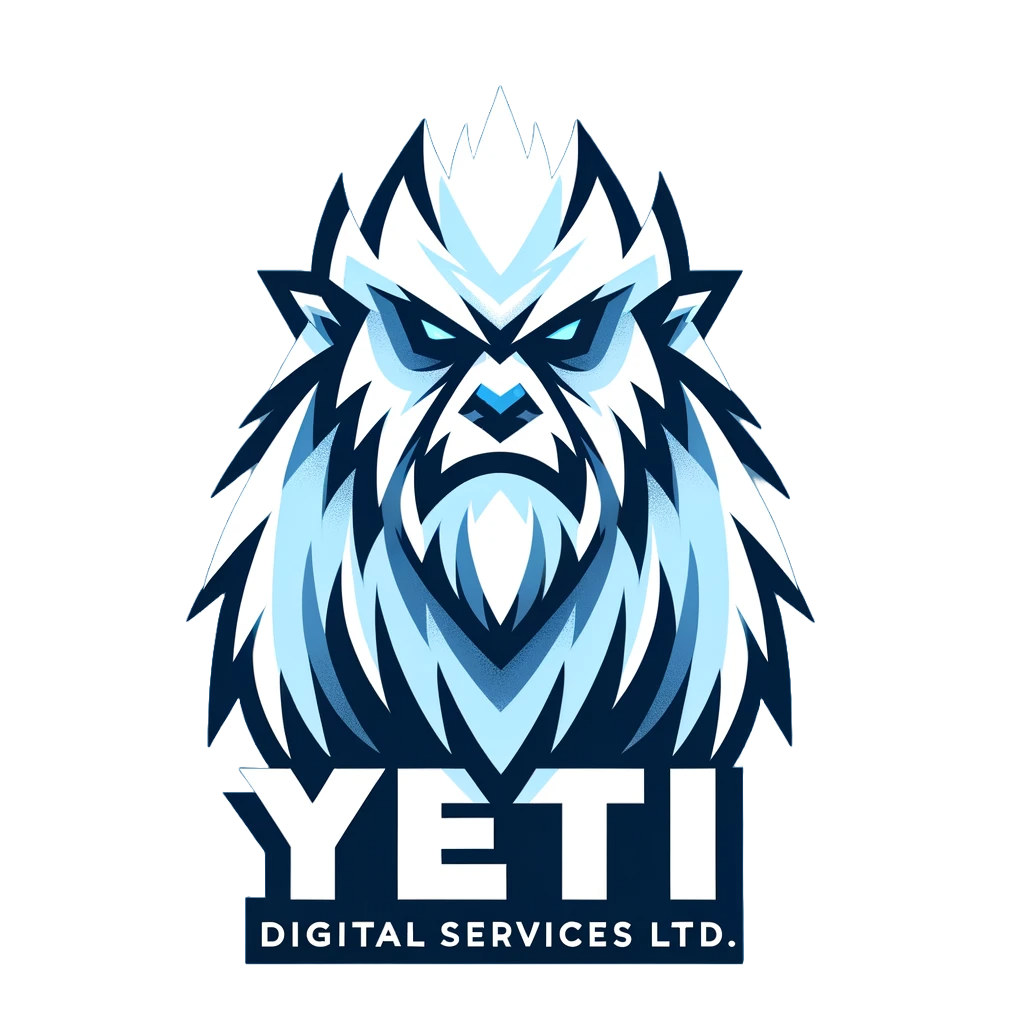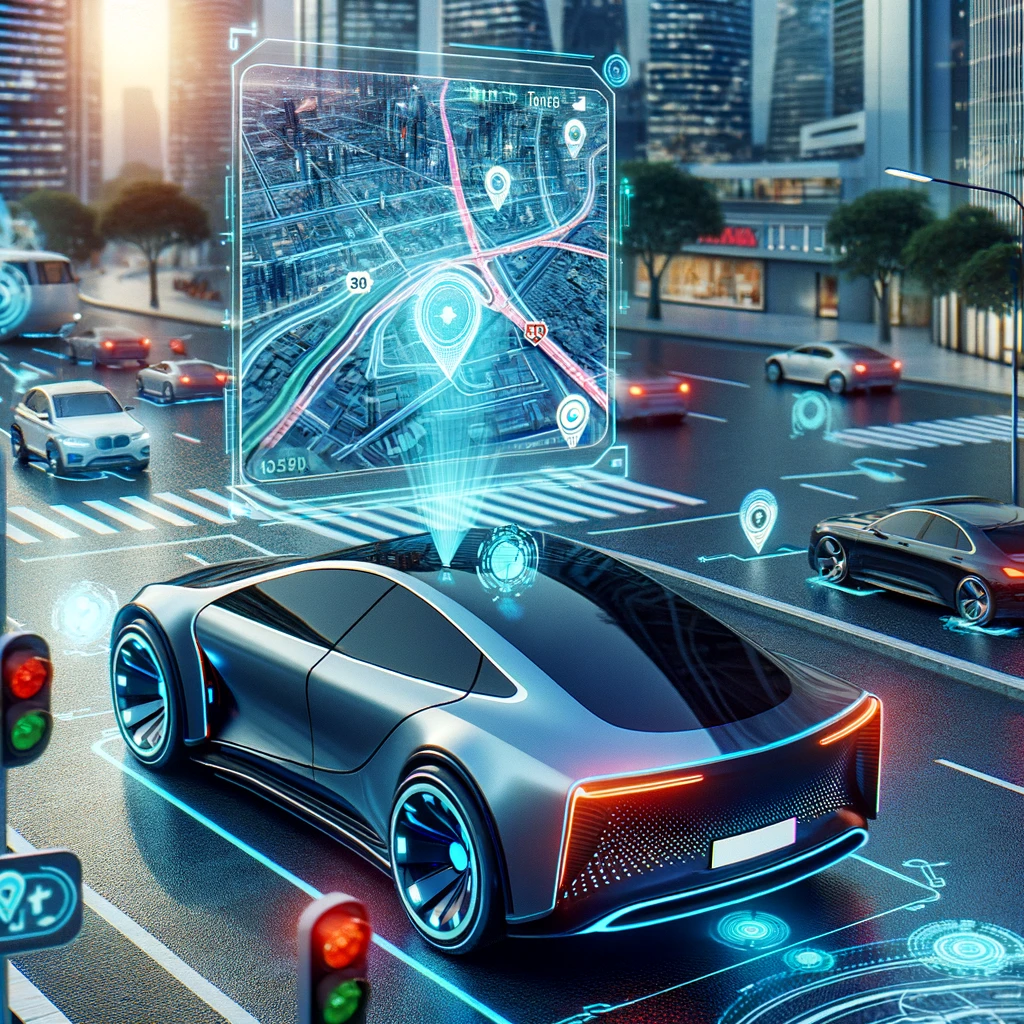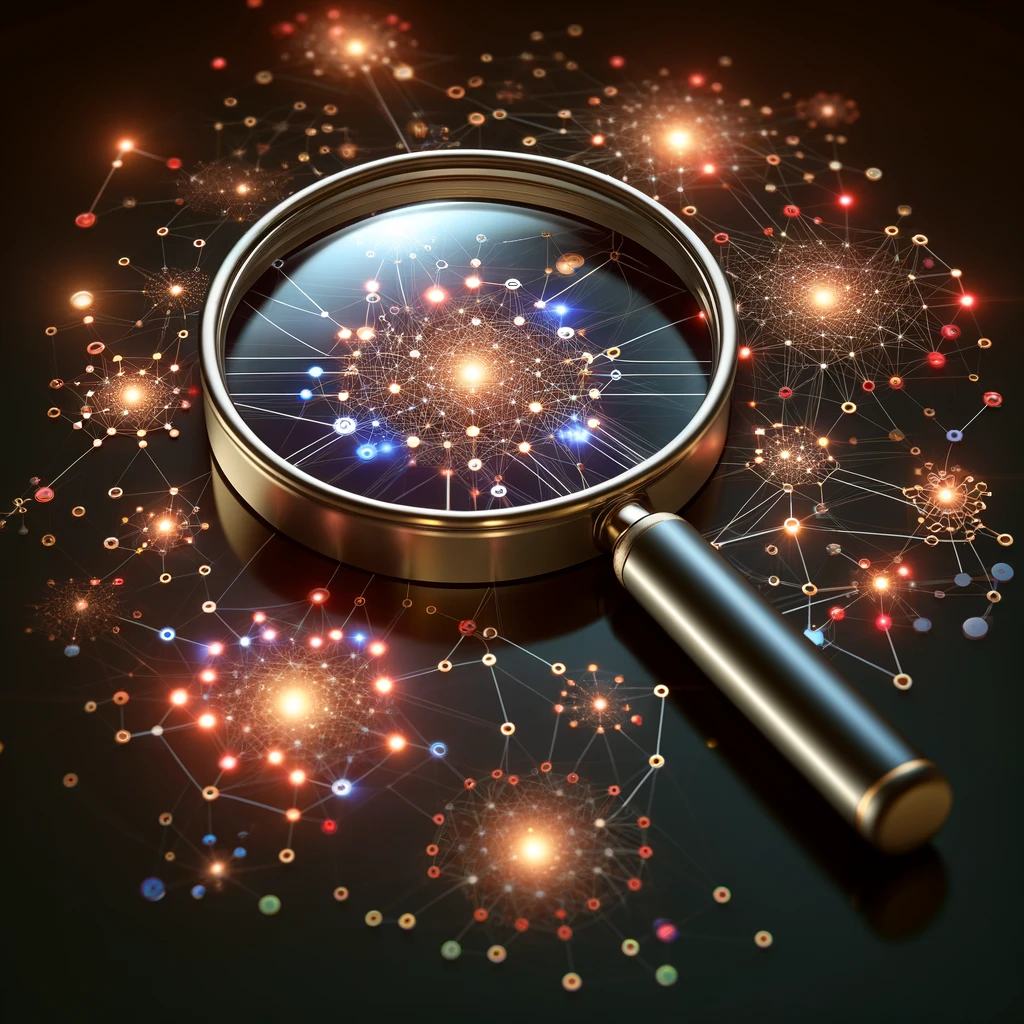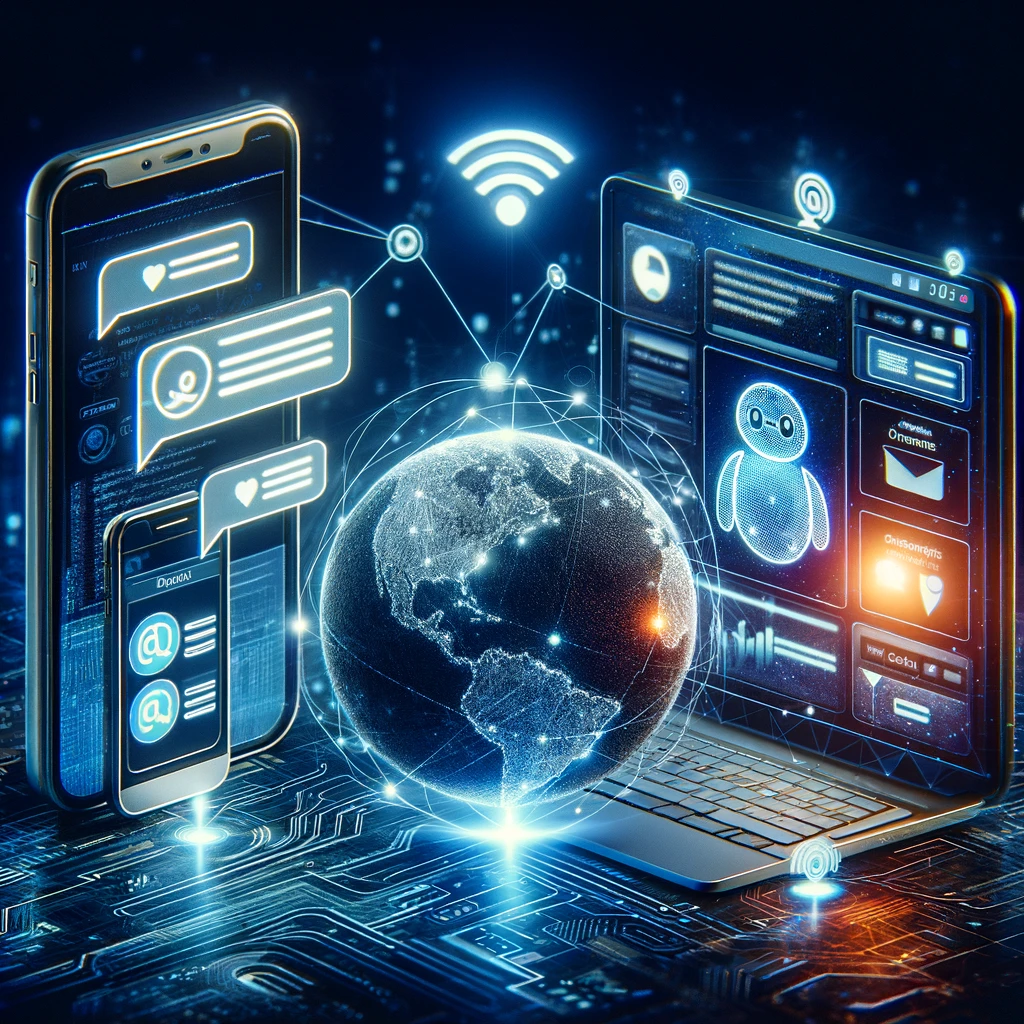Table of Contents
ToggleIntroduction
Autonomous agents are systems capable of performing tasks independently and adapting to new situations without human intervention. These agents, whether software programs or physical robots, can perceive their environment, make decisions, and take action to achieve specific goals. They are crucial in various applications, operating in complex and dynamic environments.
The importance of autonomous agents in AI and technology is significant. In robotics, they enable machines to perform tasks from simple actions to complex problem-solving. In machine learning, they learn from data and improve over time, leading to more intelligent systems. In distributed systems, autonomous agents enhance coordination and efficiency among multiple agents.
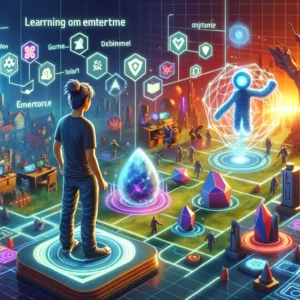 This article explores different types of autonomous agents, highlighting their characteristics, functionalities, and applications. We define autonomous agents and trace their development, then delve into various types, including reactive, deliberative, hybrid, and learning agents. We also examine multi-agent systems, discussing their components, types, and applications.
This article explores different types of autonomous agents, highlighting their characteristics, functionalities, and applications. We define autonomous agents and trace their development, then delve into various types, including reactive, deliberative, hybrid, and learning agents. We also examine multi-agent systems, discussing their components, types, and applications.
We explore machine learning agents, their types, techniques, and applications in modern technology. We discuss the applications of autonomous agents across industries, the technical challenges and ethical considerations they bring, and the regulatory aspects involved. Finally, we look at future trends in the development of autonomous agents.
By the end of this article, readers will understand the different types of autonomous agents, their roles in AI and technology, and the possibilities they offer for the future.
What Are Autonomous Agents?
Definition and Characteristics
Definition: Autonomous agents are systems or entities capable of performing tasks and making decisions independently, without human intervention. These agents can operate within a variety of environments, both physical and digital, and are designed to achieve specific goals by perceiving their surroundings, processing information, and executing actions.
Characteristics:
- Autonomy: Autonomous agents operate without direct human control, making decisions based on their own perceptions and internal states.
- Reactivity: They can respond to changes in their environment in real-time, adjusting their actions accordingly.
- Proactivity: These agents can take the initiative to achieve their goals, rather than simply reacting to stimuli.
- Adaptability: They can learn from their experiences and improve their performance over time.
- Social Ability: Many autonomous agents can communicate and cooperate with other agents or humans to complete tasks.
- Mobility (in some cases): Some autonomous agents, particularly robots, can move through their environment to perform tasks.
Historical Development and Evolution
Early Concepts: The concept of autonomous agents has roots in early AI research during the mid-20th century. Initial efforts focused on creating simple reactive agents that could respond to basic stimuli. Early robotic systems, such as the Shakey robot developed at Stanford Research Institute in the 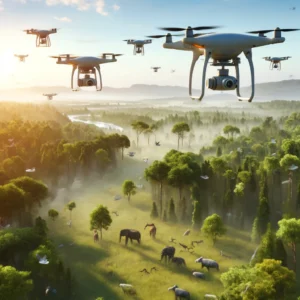 1960s, were among the first attempts to create autonomous agents that could navigate and interact with their environment.
1960s, were among the first attempts to create autonomous agents that could navigate and interact with their environment.
Progress in AI and Robotics: As AI research advanced, so did the capabilities of autonomous agents. The development of more sophisticated algorithms allowed for the creation of deliberative agents that could plan and reason about their actions. In the 1980s and 1990s, the field saw significant progress with the introduction of hybrid agents, which combined reactive and deliberative elements to balance responsiveness and strategic planning.
Machine Learning Integration: The integration of machine learning in the late 20th and early 21st centuries revolutionized autonomous agents. Learning agents emerged, capable of improving their performance through experience. Techniques such as reinforcement learning enabled agents to learn optimal actions through trial and error, leading to advancements in autonomous vehicles, robotics, and game-playing agents like AlphaGo.
Modern Developments: Today, autonomous agents are more advanced than ever, benefiting from developments in deep learning, natural language processing, and cloud computing. Multi-agent systems, where multiple autonomous agents work together, have become increasingly common in applications like swarm robotics, distributed AI, and collaborative problem-solving.
Key Functions and Capabilities
Perception: Autonomous agents gather information from their environment using sensors (in the case of robots) or data inputs (in software agents). This information is processed to form an understanding of the current state of the environment.
Decision-Making: Based on their perceptions, autonomous agents make decisions using algorithms and models. This can involve simple rule-based systems, complex planning algorithms, or learning-based approaches where the agent adapts its decision-making over time.
Action Execution: After making a decision, autonomous agents execute actions to achieve their goals. For robots, this involves physical movements or manipulations. For software agents, this could mean sending commands, interacting with other systems, or adjusting internal parameters.
Learning and Adaptation: Many autonomous agents can learn from their experiences to improve their performance. Machine learning techniques allow agents to adapt to new situations, optimize their actions, and handle uncertainties more effectively.
Communication: In multi-agent systems, autonomous agents often need to communicate and collaborate with other agents or humans. This involves sharing information, negotiating, and coordinating actions to achieve collective goals.
Navigation and Mobility: For physical agents like robots, navigation through the environment is a critical capability. This includes path planning, obstacle avoidance, and localization to move effectively from one location to another.
Task Management: Autonomous agents can manage and prioritize multiple tasks, ensuring that they complete them efficiently and effectively. This involves scheduling, resource allocation, and monitoring progress.
Types of Autonomous Agents
Reactive Agents
Description and Functionality
Reactive agents operate based on a stimulus-response mechanism, where they react directly to environmental stimuli without internal representations or deliberative processes. They function by following a set of predefined rules or behaviors triggered by specific conditions in their environment.
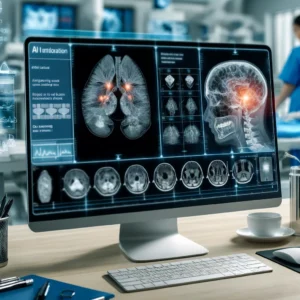 Functionality:
Functionality:
- Rule-Based Responses: Reactive agents follow simple rules like “if condition A, then action B.”
- Immediate Reactions: They respond instantly to changes in their environment without any planning or forecasting.
- No Memory: These agents do not store past states or learn from previous experiences.
Examples and Applications
Examples:
- Robotic Vacuum Cleaners: These devices use sensors to detect obstacles and dirt, reacting immediately to clean the floor and avoid collisions.
- Simple Game Characters: In video games, basic non-player characters (NPCs) that follow simple movement and attack patterns.
Applications:
- Industrial Automation: Reactive agents control assembly line robots that perform repetitive tasks like welding or painting based on sensor inputs.
- Home Automation: Smart home systems where lights turn on when motion is detected or thermostats adjust temperatures based on room occupancy.
Strengths and Weaknesses
Strengths:
- Simplicity: Easy to design and implement due to straightforward rules.
- Speed: Fast response times as there is no complex processing involved.
- Reliability: Consistent behavior in predictable environments.
Weaknesses:
- Lack of Adaptability: Cannot adapt to new situations or learn from experiences.
- Limited Functionality: Ineffective in complex or dynamic environments that require planning or reasoning.
- No Goal-Directed Behavior: Actions are purely reactive with no long-term objectives or strategies.
Deliberative Agents
Description and Functionality
Deliberative agents, also known as cognitive or goal-based agents, utilize internal models of the world and perform complex reasoning to make decisions. They plan actions to achieve specific goals by considering future states and possible outcomes.
Functionality:
- Goal-oriented: These agents have specific objectives they aim to achieve.
- Planning and Reasoning: They use algorithms to plan sequences of actions and predict future states.
- Memory Utilization: Store and recall past states and actions to inform decision-making.
Examples and Applications
Examples:
- Autonomous Vehicles: Use complex algorithms to plan routes, avoid obstacles, and adapt to traffic conditions.
- Robotic Assistants: Robots in healthcare or customer service that plan interactions to assist patients or clients.
Applications:
- Logistics and Transportation: Planning optimal delivery routes and schedules.
- Robotic Surgery: Robots that plan precise surgical actions to perform operations safely.
Strengths and Weaknesses
Strengths:
- Complex Problem Solving: Capable of handling intricate tasks requiring planning and foresight.
- Adaptability: Can adjust plans based on new information and changing environments.
- Goal Achievement: Effective in achieving specific objectives through strategic actions.
Weaknesses:
- Computationally Intensive: Require significant processing power and time for planning.
- Complexity: More difficult to design and implement compared to reactive agents.
- Potential Delays: May have slower response times due to the need for extensive reasoning.
Hybrid Agents
Description and Functionality
Hybrid agents combine elements of reactive and deliberative agents to balance responsiveness and strategic planning. They use a layered architecture in which reactive behaviors handle immediate responses, and deliberative components manage long-term planning and goal-directed actions.
Functionality:
- Layered Architecture: Separate layers for reactive and deliberative functions that operate simultaneously or hierarchically.
- Flexible Behavior: Can switch between reactive and deliberative modes based on the situation.
- Coordination: Integration mechanisms ensure smooth interaction between reactive and deliberative components.
Examples and Applications
Examples:
- Advanced Robotic Systems: Robots that navigate autonomously in dynamic environments using reactive behaviors for obstacle avoidance and deliberative planning for pathfinding.
- Intelligent Virtual Assistants: Systems that provide instant responses to queries using reactive behaviors and plan long-term interactions based on user preferences.
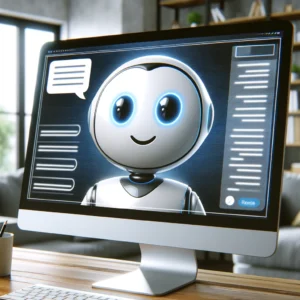 Applications:
Applications:
- Search and Rescue Robots: Use reactive behaviors for immediate danger avoidance and deliberative planning to find victims.
- Smart Manufacturing: Robots that react to real-time sensor data for immediate adjustments and plan production schedules for efficiency.
Strengths and Weaknesses
Strengths:
- Versatility: Capable of handling both immediate reactions and long-term planning.
- Robustness: Can operate effectively in both predictable and dynamic environments.
- Improved Performance: Combine the strengths of reactive and deliberative approaches for enhanced functionality.
Weaknesses:
- Complex Integration: Designing seamless coordination between reactive and deliberative components can be challenging.
- Resource Demands: May require more computational resources to manage both types of behaviors.
- Potential Conflicts: Ensuring reactive and deliberative components do not interfere with each other can be difficult.
Learning Agents
Description and Functionality
Learning agents are designed to improve their performance over time by learning from their experiences. They use machine learning techniques to adapt their behaviors and decision-making processes based on data and feedback from their environment.
Functionality:
- Self-Improvement: Continuously refine actions and strategies based on new data.
- Adaptive Algorithms: Utilize algorithms like supervised learning, unsupervised learning, and reinforcement learning.
- Feedback Mechanisms: Adjust actions based on rewards, punishments, or errors to optimize performance.
Examples and Applications
Examples:
- Recommendation Systems: Use user data to learn and suggest products, movies, or music.
- Game AI: Adapts to player behavior to provide challenging and engaging gameplay.
Applications:
- Autonomous Vehicles: Improve driving strategies through real-world driving data and simulations.
- Healthcare Diagnostics: Systems that learn from medical data to improve diagnosis and treatment recommendations.
Strengths and Weaknesses
Strengths:
- Continuous Improvement: Performance enhances over time as more data is collected and analyzed.
- Adaptability: Can handle a wide range of environments and conditions by learning from experiences.
- Complex Problem Solving: Capable of finding solutions to problems that are difficult to explicitly program.
Weaknesses:
- Data Dependency: Requires large amounts of data for effective learning, which may not always be available.
- Computationally Intensive: Learning processes can be resource-intensive and time-consuming.
- Risk of Overfitting: May become too specialized to specific data, reducing generalizability to new situations.
Multi-Agent Systems
Definition and Importance
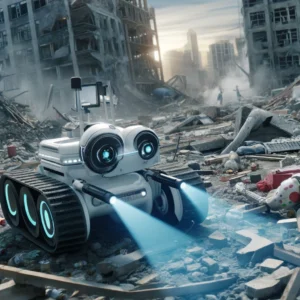 Definition: Multi-agent systems (MAS) consist of multiple interacting autonomous agents within an environment. These agents can be either software-based or robotic and are designed to work together (or sometimes against each other) to achieve individual or collective goals.
Definition: Multi-agent systems (MAS) consist of multiple interacting autonomous agents within an environment. These agents can be either software-based or robotic and are designed to work together (or sometimes against each other) to achieve individual or collective goals.
Importance: MAS is crucial in solving complex problems that are beyond the capabilities of a single agent. They enhance scalability, robustness, and flexibility, enabling efficient problem-solving and decision-making in various domains such as robotics, distributed computing, and artificial intelligence.
Types of Multi-Agent Systems
Homogeneous vs. Heterogeneous Agents:
- Homogeneous Agents: All agents in the system are identical in terms of their capabilities, design, and objectives. This uniformity simplifies coordination and communication.
- Example: Swarm robots are used for environmental monitoring, where each robot performs identical tasks.
- Heterogeneous Agents: Agents have different capabilities, designs, or goals. This diversity allows for more complex and specialized task allocation and problem-solving.
- Example: A team of robots, some specializing in navigation and others in manipulation, working together in a search-and-rescue mission.
Cooperative vs. Competitive Agents:
- Cooperative Agents: Agents work together to achieve a common goal, often sharing information and resources.
- Example: Autonomous drones coordinate to map an area efficiently.
- Competitive Agents: Agents have individual goals that may conflict, leading to competition.
- Example: Trading agents in a financial market trying to maximize their profits.
Key Components and Architecture
Components:
- Agents: The individual entities capable of autonomous action.
- Environment: The context within which the agents operate and interact.
- Communication: The mechanisms through which agents share information and coordinate actions.
- Coordination: The processes that manage inter-agent dependencies and interactions.
- Control: Strategies for overseeing the system’s operation, which can be centralized, decentralized, or hybrid.
Architecture:
- Centralized: A central controller oversees and directs all agent activities. This simplifies coordination but can be a single point of failure.
- Decentralized: Each agent operates independently, making decisions based on local information. This enhances robustness and scalability but can complicate coordination.
- Hybrid: Combines elements of centralized and decentralized architectures to balance coordination and robustness.
Applications of Multi-Agent Systems
Robotics:
- Swarm Robotics: Large numbers of simple robots working together to perform tasks like search and rescue, environmental monitoring, or agricultural automation.
- Collaborative Robots (Cobots): Robots working alongside humans in industrial settings to enhance productivity and safety.
Game Theory:
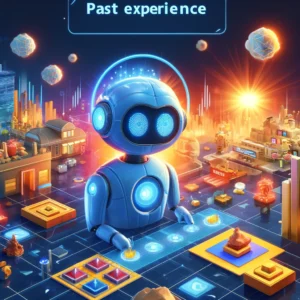 Strategic Decision-Making: Agents use game-theoretic approaches to optimize their strategies in competitive or cooperative scenarios.
Strategic Decision-Making: Agents use game-theoretic approaches to optimize their strategies in competitive or cooperative scenarios.- Simulations: Modeling and analyzing strategic interactions in economics, politics, or military applications.
Distributed Problem Solving:
- Resource Allocation: Agents collaboratively manage and allocate resources in distributed networks, such as grid computing or supply chain management.
- Consensus Algorithms: Ensuring that all agents in a network agree on a common decision or value is critical in distributed systems like blockchain.
Challenges and Future Trends
Challenges:
- Scalability: Ensuring system performance as the number of agents increases.
- Coordination Complexity: Managing interactions and dependencies among numerous agents.
- Communication Overhead: Balancing the need for information sharing with the limitations of communication bandwidth and latency.
- Security and Privacy: Protecting agents from malicious actions and ensuring the privacy of information.
Future Trends:
- Increased Autonomy: Developing agents with higher levels of autonomy and decision-making capabilities.
- Enhanced Learning: Integrating advanced machine learning techniques to improve agent adaptability and performance.
- Interdisciplinary Applications: Expanding MAS applications to new fields like healthcare, smart cities, and environmental conservation.
Machine Learning Agents
Definition and Importance
Definition: Machine learning agents are autonomous systems that utilize machine learning algorithms to improve their performance over time. They learn from data and experiences to make better decisions and adapt to new situations.
Importance: Machine learning agents are vital for advancing AI, as they enable systems to handle complex tasks, improve efficiency, and adapt to dynamic environments. They are essential in various fields, including robotics, finance, healthcare, and personalized recommendations.
Types of Machine Learning Agents
Supervised Learning Agents:
- Definition: Agents learn from labeled data, where the correct output is provided for each input example.
- Functionality: They use this data to make predictions or decisions when presented with new, unseen data.
- Example: Image recognition systems that identify objects in pictures based on labeled training data.
Unsupervised Learning Agents:
- Definition: Agents learn from unlabeled data, identifying patterns and structures without explicit guidance.
- Functionality: They cluster data into groups or discover hidden features.
- Example: Customer segmentation in marketing, where agents group customers based on purchasing behavior.
Reinforcement Learning Agents:
- Definition: Agents learn by interacting with their environment and receiving rewards or penalties based on their actions.
- Functionality: They aim to maximize cumulative rewards through trial and error.
- Example: Autonomous vehicles learn to navigate by receiving rewards for safe driving and penalties for collisions.
Key Techniques Used in Machine Learning Agents
- Neural Networks: Models that mimic the human brain to process complex patterns and data.
 Deep Learning: Advanced neural networks with multiple layers that can learn hierarchical representations.
Deep Learning: Advanced neural networks with multiple layers that can learn hierarchical representations.- Decision Trees: Models that split data into branches to make decisions based on feature values.
- Support Vector Machines: Algorithms that classify data by finding the optimal hyperplane that separates different classes.
- Clustering Algorithms: Techniques like K-means that group data into clusters based on similarity.
- Reinforcement Learning Algorithms: Methods like Q-learning and policy gradients that optimize actions through rewards and penalties.
Applications of Machine Learning Agents
Autonomous Vehicles:
- Functionality: Use sensors and machine learning to perceive the environment, make driving decisions, and navigate safely.
- Examples: Self-driving cars by companies like Tesla and Waymo.
Personalized Recommendations:
- Functionality: Analyze user data to suggest products, services, or content tailored to individual preferences.
- Examples: Recommendation systems used by Amazon, Netflix, and Spotify.
Predictive Maintenance:
- Functionality: Predict equipment failures and maintenance needs based on historical data and sensor inputs.
- Examples: Systems used in manufacturing to reduce downtime and optimize maintenance schedules.
Challenges and Future Trends
Challenges:
- Data Quality: Ensuring the availability of high-quality, relevant data for training.
- Computational Resources: Managing the intensive computational requirements of machine learning algorithms.
- Interpretability: Making complex models understandable and transparent to users.
- Ethical Considerations: Addressing issues related to bias, fairness, and accountability in machine learning decisions.
Future Trends:
- Improved Algorithms: Developing more efficient and effective machine learning techniques.
- Integration with Edge Computing: Enabling machine learning agents to process data and make decisions locally, reducing latency.
- Collaborative Learning: Enhancing learning agents’ ability to collaborate and share knowledge.
- Expanded Applications: Extending machine learning agent applications to new domains such as healthcare, climate science, and smart cities.
Applications of Autonomous Agents
Overview of Key Application Areas
Autonomous agents and multi-agent systems have revolutionized various industries by enabling automation, enhancing decision-making processes, and improving efficiency. They are increasingly prevalent in key application areas, including robotics and automation, healthcare, finance, smart environments, and entertainment. These agents perform tasks ranging from routine operations to complex problem-solving, often surpassing human capabilities in speed and precision.
Detailed Examples
Robotics and Automation
Overview: In robotics and automation, autonomous agents control robots and automated systems to perform tasks with minimal human intervention. These tasks can range from simple repetitive actions to complex operations requiring sophisticated decision-making.
Detailed Examples:
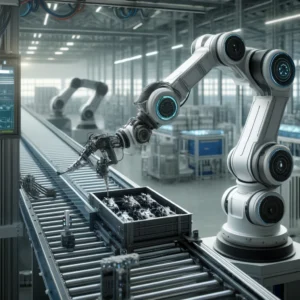 Industrial Robots: In manufacturing, robots equipped with autonomous agents perform welding, painting, assembly, and packaging. For example, car manufacturing plants use robots to assemble vehicles with high precision and speed, reducing labor costs and increasing production efficiency.
Industrial Robots: In manufacturing, robots equipped with autonomous agents perform welding, painting, assembly, and packaging. For example, car manufacturing plants use robots to assemble vehicles with high precision and speed, reducing labor costs and increasing production efficiency.- Logistics and Warehousing: Autonomous robots in warehouses, such as those used by Amazon, navigate and transport goods efficiently, optimizing storage and retrieval processes.
- Service Robots: Robots like automated vacuum cleaners and lawnmowers autonomously clean homes and maintain gardens, simplifying household chores for users.
- Agricultural Robots: Drones and ground robots perform tasks like planting, irrigation, and harvesting. For example, autonomous tractors can plow fields and plant crops with precision, increasing agricultural productivity.
Healthcare and Medical Diagnostics
Overview: In healthcare, autonomous agents enhance diagnostics, treatment, and patient care by leveraging AI and robotics. These agents can analyze medical data, assist in surgeries, and monitor patient health.
Detailed Examples:
- Diagnostic Systems: AI-driven diagnostic tools analyze medical images, such as X-rays and MRIs, to detect diseases like cancer with high accuracy. For instance, IBM Watson Health uses machine learning to interpret medical images and provide diagnostic recommendations.
- Robotic Surgery: Surgical robots, controlled by autonomous agents, perform minimally invasive surgeries with precision. The da Vinci Surgical System, for example, enables surgeons to conduct complex procedures with enhanced dexterity and control.
- Patient Monitoring: Wearable devices equipped with autonomous agents monitor vital signs like heart rate and blood pressure, alerting healthcare providers to potential issues in real time. Systems like Fitbit and Apple Watch track health metrics and provide insights to users and doctors.
- Personalized Medicine: AI agents analyze genetic information and medical history to tailor treatments for individual patients, improving outcomes and reducing side effects.
Finance and Trading
Overview: In finance, autonomous agents automate trading, risk management, and customer service, enhancing efficiency and decision-making. These agents analyze vast amounts of data to identify trends and make informed financial decisions.
Detailed Examples:
- Algorithmic Trading: Autonomous trading systems execute trades based on pre-programmed algorithms and real-time market data. High-frequency trading firms use these systems to perform large volumes of trades at high speed, capitalizing on market inefficiencies.
 Risk Management: AI agents assess and manage financial risks by analyzing market conditions and predicting potential downturns. For example, banks use autonomous agents to evaluate credit risk and adjust lending strategies accordingly.
Risk Management: AI agents assess and manage financial risks by analyzing market conditions and predicting potential downturns. For example, banks use autonomous agents to evaluate credit risk and adjust lending strategies accordingly.- Fraud Detection: Machine learning agents detect fraudulent activities by identifying unusual patterns in transaction data. Companies like PayPal use AI to monitor and flag suspicious transactions, preventing fraud.
- Customer Service: Chatbots and virtual assistants provide financial advice and support to customers, answering queries and guiding them through financial products. For example, robo-advisors like Betterment and Wealth Front offer personalized investment advice based on user preferences.
Smart Environments and IoT
Overview: In smart environments, autonomous agents manage interconnected devices and systems to optimize living and working conditions. These agents enhance convenience, efficiency, and security in homes, offices, and cities.
Detailed Examples:
- Smart Homes: Autonomous agents control home automation systems, managing lighting, heating, and security based on user preferences and real-time data. For instance, smart thermostats like Nest learn user behavior and adjust temperature settings for energy efficiency.
- Smart Cities: AI agents coordinate traffic lights, public transportation, and utility services to improve urban living. In cities like Singapore, autonomous systems analyze traffic data to manage traffic flow and reduce congestion.
- Industrial IoT: In manufacturing, IoT devices equipped with autonomous agents monitor machinery and optimize production processes. Predictive maintenance systems use sensor data to predict equipment failures and schedule repairs, minimizing downtime.
- Environmental Monitoring: Autonomous drones and sensors monitor environmental conditions, such as air quality and water levels, providing real-time data for disaster management and conservation efforts.
Entertainment and Gaming
Overview: In entertainment and gaming, autonomous agents create immersive experiences and enhance user interaction. These agents control game characters, personalize content, and manage virtual environments.
Detailed Examples:
- Game AI: Autonomous agents control non-player characters (NPCs) in video games, making them behave intelligently and realistically. Games like “The Elder Scrolls V: Skyrim” feature NPCs that interact dynamically with the player and environment.
- Content Personalization: AI agents recommend movies, music, and games based on user preferences. Streaming services like Netflix and Spotify use machine learning to suggest content that users are likely to enjoy.
- Virtual Reality (VR): Autonomous agents in VR environments create realistic and responsive interactions. For example, VR training simulations for pilots and surgeons use AI-driven avatars to mimic real-world scenarios.
- Interactive Storytelling: AI agents drive narrative experiences in interactive media, allowing for dynamic and adaptive storytelling. Games like “Detroit: Become Human” use AI to adjust the storyline based on player choices, creating unique experiences for each user.
Challenges and Ethical Considerations
technical Challenges in Developing Autonomous Agents
Complexity of Environmental Interaction
Challenge: Autonomous agents must operate in complex and dynamic environments, which can be unpredictable and constantly changing. This requires advanced perception and decision-making capabilities.
Details:
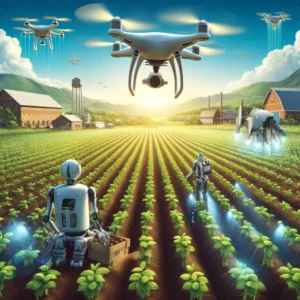 Perception and Sensing: It is difficult to develop sensors and algorithms that can accurately perceive and interpret the environment. Agents need to process vast amounts of data from cameras, LIDAR, sonar, and other sensors in real-time.
Perception and Sensing: It is difficult to develop sensors and algorithms that can accurately perceive and interpret the environment. Agents need to process vast amounts of data from cameras, LIDAR, sonar, and other sensors in real-time.- Context Awareness: Agents must understand the context of their environment and recognize objects, events, and situations. This involves complex machine learning and computer vision techniques.
- Adaptation and Learning: Agents need to adapt to new and unforeseen situations. This requires robust learning algorithms that can generalize from limited data and continue to learn in real time.
Decision-Making and Planning
Challenge: Creating agents that can make optimal decisions and plan effectively in uncertain and dynamic conditions is a significant technical hurdle.
Details:
- Real-Time Decision-Making: Agents must make decisions quickly, often under time constraints, which requires efficient algorithms and substantial computational power.
- Planning Algorithms: Developing effective planning algorithms that can predict future states and evaluate multiple potential actions is complex, particularly in environments with many variables and possible outcomes.
- Balancing Trade-Offs: Agents need to balance multiple objectives and constraints, such as speed versus safety in autonomous vehicles.
Communication and Coordination
Challenge: In multi-agent systems, communication and coordination among agents are critical but challenging to implement effectively.
Details:
- Inter-Agent Communication: Ensuring reliable and efficient communication between agents, especially in environments with limited bandwidth or high latency, is challenging.
- Coordination Strategies: Designing strategies for agents to coordinate their actions, share information, and collaborate on tasks requires sophisticated algorithms and protocols.
- Conflict Resolution: Managing conflicts and ensuring that agents can negotiate and resolve differences without human intervention is difficult.
Robustness and Reliability
Challenge: Ensuring that autonomous agents are robust and reliable, especially in safety-critical applications, is a major concern.
Details:
- Error Handling: Agents must be able to handle errors and failures gracefully, with mechanisms for recovery and fail-safe operations.
- Verification and Validation: Testing and verifying the behavior of autonomous agents in all possible scenarios is extremely challenging, requiring extensive simulation and real-world testing.
- Scalability: Developing agents that can scale their operations effectively as the complexity of the environment or the number of agents increases.
Ethical Implications and Concerns
Accountability and Responsibility
Concern: Determining who is accountable when an autonomous agent causes harm or makes a mistake is a significant ethical issue.
Details:
- Attribution of Responsibility: When an autonomous agent makes a decision that leads to harm, it is unclear whether the responsibility lies with the agent’s developer, the user, or the manufacturer.
- Legal Liability: Establishing legal frameworks for liability in incidents involving autonomous agents, such as accidents involving self-driving cars, is complex.
Bias and Fairness
Concern: Autonomous agents can perpetuate or even exacerbate biases present in their training data, 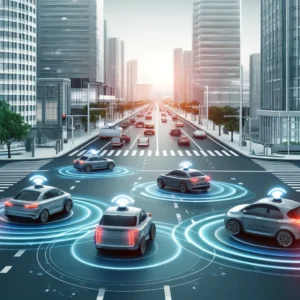 leading to unfair or discriminatory outcomes.
leading to unfair or discriminatory outcomes.
Details:
- Training Data Bias: If the data used to train an autonomous agent reflects societal biases, the agent’s decisions may also be biased. For example, facial recognition systems have been shown to have higher error rates for certain demographic groups.
- Algorithmic Transparency: Ensuring that the decision-making processes of autonomous agents are transparent and understandable to avoid hidden biases.
- Fairness in Outcomes: Developing methods to ensure that the outcomes of autonomous agents’ actions are fair and equitable for all individuals and groups.
Privacy and Surveillance
Concern: The deployment of autonomous agents, particularly those that collect and analyze personal data, raises significant privacy concerns.
Details:
- Data Collection: Autonomous agents often require large amounts of data to function effectively, which can lead to the collection of sensitive personal information without individuals’ consent.
- Surveillance: The use of autonomous agents for surveillance purposes, such as drones or security robots, raises concerns about constant monitoring and the potential for abuse.
- Data Security: Ensuring that the data collected by autonomous agents is stored securely and used responsibly to protect individuals’ privacy.
Regulatory and Legal Considerations
Regulatory Frameworks
Consideration: Developing comprehensive regulatory frameworks that govern the development and deployment of autonomous agents is essential but challenging.
Details:
- Standardization: Establishing standards and guidelines for the design, testing, and deployment of autonomous agents to ensure safety and reliability.
- Compliance: Ensuring that developers and manufacturers comply with these standards and regulations through certification processes.
- International Coordination: Harmonizing regulations across different countries to facilitate the global deployment of autonomous agents.
Safety and Security Regulations
Consideration: Regulating the safety and security aspects of autonomous agents to protect users and the public.
Details:
- Safety Standards: Implementing rigorous safety standards to ensure that autonomous agents operate safely in all conditions, particularly in high-risk applications like autonomous vehicles and healthcare robots.
- Security Measures: Requiring robust security measures to protect autonomous agents from cyber-attacks and unauthorized access, which could lead to harmful actions.
Ethical Guidelines
Consideration: Establishing ethical guidelines to ensure that the development and deployment of autonomous agents align with societal values and ethical principles.
Details:
 Ethical Design Principles: Incorporating ethical considerations into the design and development processes of autonomous agents, such as fairness, transparency, and accountability.
Ethical Design Principles: Incorporating ethical considerations into the design and development processes of autonomous agents, such as fairness, transparency, and accountability.- Impact Assessments: Conduct assessments to evaluate the potential ethical impacts of deploying autonomous agents in various contexts.
- Public Engagement: Involving the public and other stakeholders in the development of ethical guidelines to ensure they reflect societal values and concerns.
Legal Liability and Accountability
Consideration: Defining legal frameworks for liability and accountability in incidents involving autonomous agents.
Details:
- Liability Laws: Establishing clear laws that define who is liable when an autonomous agent causes harm or damages, such as the owner, manufacturer, or software developer.
- Insurance Requirements: Requiring insurance coverage for autonomous agents, particularly in high-risk applications like autonomous vehicles, to ensure that victims receive compensation.
- Legal Precedents: Developing legal precedents through case law to guide future decisions and ensure consistency in the application of laws related to autonomous agents.
Future Directions and Trends
Emerging Technologies and Innovations
Advanced Machine Learning and AI
Emerging Technologies:
- Deep Learning: Neural networks with multiple layers (deep learning) have significantly improved the ability of autonomous agents to recognize patterns and make decisions. Advances in deep learning architectures, such as convolutional neural networks (CNNs) and recurrent neural networks (RNNs), enable more complex tasks like image and speech recognition.
- Reinforcement Learning (RL): RL allows agents to learn optimal behaviors through trial and error, receiving rewards or penalties for actions. Innovations like deep Q-networks (DQNs) and proximal policy optimization (PPO) are pushing the boundaries of what RL agents can achieve.
- Transfer Learning: Transfer learning enables agents to apply knowledge gained from one task to another, reducing the amount of data and training time required for new tasks. This is crucial for developing versatile agents capable of performing a wide range of activities.
Edge Computing and IoT Integration
Emerging Technologies:
- Edge Computing: By processing data closer to where it is generated (on the edge of the network), edge computing reduces latency and bandwidth usage. This is particularly important for autonomous agents in real-time applications, such as autonomous vehicles and smart manufacturing systems.
- IoT Integration: The integration of autonomous agents with Internet of Things (IoT) devices creates more interconnected and intelligent environments. IoT sensors provide real-time data that agents use to make more informed decisions.
Autonomous Robotics and Drones
Emerging Technologies:
 Swarm Robotics: Inspired by natural systems like ant colonies, swarm robotics involves large groups of simple robots working together to perform complex tasks. Advances in algorithms for coordination and communication are enhancing the capabilities of swarm robots.
Swarm Robotics: Inspired by natural systems like ant colonies, swarm robotics involves large groups of simple robots working together to perform complex tasks. Advances in algorithms for coordination and communication are enhancing the capabilities of swarm robots.- Aerial Drones: Innovations in drone technology are leading to more autonomous and efficient aerial systems. These drones are being used for tasks such as delivery, surveillance, and environmental monitoring.
Natural Language Processing (NLP)
Emerging Technologies:
- Conversational AI: Advances in NLP and conversational AI enable agents to understand and generate human language more accurately. Technologies like GPT-4 and BERT are improving the ability of virtual assistants and customer service bots to interact naturally with users.
- Multimodal AI: Combining NLP with other data types, such as visual and auditory information, allows agents to understand and respond to more complex inputs, leading to more sophisticated and versatile interactions.
Potential Impacts on Society and Industry
Labor Market and Employment
Potential Impacts:
- Job Displacement: The automation of tasks traditionally performed by humans could lead to job displacement in sectors such as manufacturing, logistics, and customer service. However, new job opportunities may arise in fields related to the development, maintenance, and oversight of autonomous systems.
- Skill Shifts: There will be a growing demand for workers with skills in AI, robotics, and data science. Educational and training programs will need to adapt to prepare the workforce for these changes.
Efficiency and Productivity
Potential Impacts:
- Increased Productivity: Autonomous agents can perform tasks faster and more accurately than humans, leading to increased productivity across various industries. For example, autonomous vehicles can reduce delivery times, and AI-driven diagnostic tools can expedite medical diagnoses.
- Cost Reduction: Automation can lead to significant cost savings by reducing the need for human labor, minimizing errors, and optimizing resource usage. Industries like manufacturing, agriculture, and healthcare stand to benefit from these efficiencies.
Quality of Life and Safety
Potential Impacts:
- Enhanced Safety: Autonomous agents can improve safety in hazardous environments. For instance, autonomous robots can perform dangerous tasks in construction or mining, reducing the risk of human injury.
- Improved Quality of Life: Autonomous systems in healthcare, such as robotic assistants and AI diagnostic tools, can enhance patient care and make medical services more accessible. In daily life, smart home systems can increase convenience and security.
Ethical and Social Considerations
Potential Impacts:
- Bias and Fairness: Autonomous agents must be designed to avoid biases that could lead to unfair or discriminatory outcomes. Ensuring fairness in AI decision-making is crucial to gaining public trust and acceptance.
- Privacy Concerns: The widespread use of autonomous agents, particularly those integrated with IoT devices, raises significant privacy concerns. Protecting personal data and ensuring transparent data usage policies will be essential.
Predictions for the Future Development of Autonomous Agents
Increased Autonomy and Intelligence
Predictions:
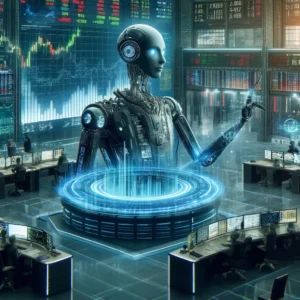 Higher Levels of Autonomy: Future autonomous agents will exhibit higher levels of autonomy, with the ability to perform more complex and unpredictable tasks without human intervention. This will be driven by advancements in AI algorithms and increased computational power.
Higher Levels of Autonomy: Future autonomous agents will exhibit higher levels of autonomy, with the ability to perform more complex and unpredictable tasks without human intervention. This will be driven by advancements in AI algorithms and increased computational power.- General AI Capabilities: While current agents are designed for specific tasks, future developments may lead to more generalized AI capabilities, enabling agents to adapt and perform a wider variety of tasks across different domains.
Enhanced Collaboration and Coordination
Predictions:
- Multi-Agent Collaboration: The future will see more sophisticated multi-agent systems where agents can seamlessly collaborate and coordinate with each other. This will enhance their ability to tackle complex problems that require collective intelligence.
- Human-Agent Collaboration: Autonomous agents will increasingly work alongside humans, complementing human abilities and enhancing productivity. Improved interfaces and interaction models will facilitate smoother human-agent collaboration.
Ethical AI and Trustworthiness
Predictions:
- Ethical AI Development: There will be a stronger focus on developing ethical AI systems that prioritize fairness, transparency, and accountability. Regulatory frameworks and industry standards will evolve to ensure ethical practices in AI development.
- Building Trust: Efforts to make AI systems more explainable and transparent will be key to building public trust. Users will need to understand how autonomous agents make decisions and be assured of their reliability and fairness.
Integration with Emerging Technologies
Predictions:
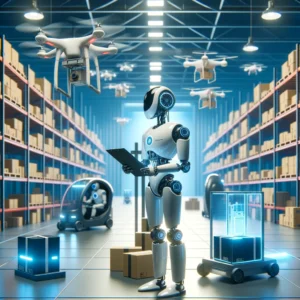 Quantum Computing: The integration of quantum computing with AI could revolutionize the capabilities of autonomous agents, enabling them to solve problems that are currently intractable for classical computers.
Quantum Computing: The integration of quantum computing with AI could revolutionize the capabilities of autonomous agents, enabling them to solve problems that are currently intractable for classical computers.- 5G and Beyond The rollout of 5G networks and future advancements in communication technologies will provide the high-speed, low-latency connectivity needed for real-time autonomous applications, such as connected autonomous vehicles and smart cities.
Societal and Economic Transformation
Predictions:
- Smart Cities and Infrastructure: Autonomous agents will play a crucial role in the development of smart cities, where interconnected systems optimize urban living conditions, from traffic management to energy consumption.
- Economic Shifts: The widespread adoption of autonomous agents will lead to significant economic shifts, with new industries emerging around AI and robotics, and traditional industries transforming to integrate these technologies.
Frequently Asked Questions
What are autonomous agents, and how do they work?
Autonomous agents are systems that can perform tasks and make decisions independently, without human intervention. They work by perceiving their environment through sensors or data inputs, processing this information to make decisions, executing actions to achieve specific goals, and continuously learning and adapting from their experiences to improve future performance.
How can autonomous agents benefit my business?
Autonomous agents can significantly benefit your business by increasing efficiency, reducing costs, and enhancing productivity. They perform tasks faster and more accurately than humans, minimize errors, and can operate continuously without fatigue. For instance, in customer service, chatbots can handle inquiries 24/7, improving customer satisfaction and reducing the workload on human staff.
What industries can benefit from Yeti Digital Services Inc.’s autonomous agents?
Yeti Digital Services Inc.’s autonomous agents can benefit a wide range of industries, including:
- Customer Service: Chatbots provide instant responses to customer inquiries.
- Healthcare: Diagnostic tools and patient monitoring systems.
- Finance: Algorithmic trading, fraud detection, and customer support.
- Retail: Personalized shopping assistants and inventory management systems.
- Manufacturing: Robotics for assembly, quality control, and logistics.
What are the main challenges in developing autonomous agents?
The main challenges in developing autonomous agents include:
- Complex Environment Interaction: Ensuring agents can accurately perceive and interpret their environment.
- Decision-Making and Planning: Developing algorithms for optimal decision-making under uncertainty.
- Communication and Coordination: Enabling reliable communication among multiple agents.
- Robustness and Reliability: Ensuring agents can handle errors and operate safely in all conditions.
- Ethical and Privacy Concerns: Addressing issues related to bias, accountability, and data privacy.
How does Yeti Digital Services Inc. ensure the ethical use of autonomous agents?
Yeti Digital Services Inc. ensures the ethical use of autonomous agents by incorporating ethical considerations into the design and development process. This includes:
- Bias Mitigation: Developing algorithms that minimize biases and ensure fairness.
- Transparency: Creating systems with transparent decision-making processes that users can understand.
- Privacy Protection: Implementing robust data security measures to protect personal information.
- Accountability: Establishing clear guidelines and frameworks for accountability when autonomous agents are deployed.
Conclusion
In this article, we’ve explored the fascinating world of autonomous agents, delving into their definitions, characteristics, and various types, including reactive, deliberative, hybrid, and learning agents. We’ve examined the critical roles these agents play in different industries, such as robotics and  automation, healthcare, finance, smart environments, and entertainment. Additionally, we have discussed the technical challenges, ethical implications, and regulatory considerations that come with developing and deploying autonomous agents.
automation, healthcare, finance, smart environments, and entertainment. Additionally, we have discussed the technical challenges, ethical implications, and regulatory considerations that come with developing and deploying autonomous agents.
Understanding the different types of autonomous agents is essential for leveraging their full potential. Each type, from reactive agents that respond to immediate stimuli to learning agents that adapt and improve over time, offers unique capabilities and applications. This knowledge allows businesses to select and implement the right kind of agent for their specific needs, enhancing efficiency, productivity, and innovation.
The future of autonomous agents is bright and full of promise. As technology continues to advance, we can expect these agents to become even more autonomous, intelligent, and capable. They will revolutionize industries, transform how we live and work, and address some of society’s most pressing challenges. However, to fully realize these benefits, it is crucial to address the ethical, technical, and regulatory hurdles associated with their development.
At Yeti Digital Services Inc., we are at the forefront of creating cutting-edge chatbots and autonomous systems designed to meet the unique needs of our clients. We invite you to explore how our innovative solutions can help your business harness the power of autonomous agents. Whether you’re looking to improve customer service, optimize operations, or innovate in your industry, our team is here to support you every step of the way.
Don’t miss out on the transformative potential of autonomous agents. Contact Yeti Digital Services Inc. today to learn more about how our advanced solutions can drive your business forward. Together, we can unlock new levels of efficiency, productivity, and success. Visit our website or reach out to our team to get started on your journey towards a smarter, more autonomous future.
References “I would like to take a moment and give credit to all the wonderful people before me who took time doing studies and writing papers on autonomous agents. Without their help, this article would not be possible.”
Books:
- Russell, S. J., & Norvig, P. (2020). Artificial Intelligence: A Modern Approach (4th ed.). Pearson.
- Sutton, R. S., & Barto, A. G. (2018). Reinforcement Learning: An Introduction (2nd ed.). MIT Press.
Academic Papers:
- Mnih, V., Kavukcuoglu, K., Silver, D., Rusu, A. A., Veness, J., Bellemare, M. G., … & Hassabis, D. (2015). Human-level control through deep reinforcement learning. Nature, 518(7540), 529-533.
- Arulkumaran, K., Deisenroth, M. P., Brundage, M., & Bharath, A. A. (2017). Deep reinforcement learning: A brief survey. IEEE Signal Processing Magazine, 34(6), 26-38.
- Bonabeau, E., Dorigo, M., & Theraulaz, G. (1999). Swarm Intelligence: From Natural to Artificial Systems. Oxford University Press.
Articles:
- Cummings, M. L. (2021). Rethinking the maturity of AI in safety-critical settings. Communications of the ACM, 64(10), 34-36.
- Scharre, P. (2018). Army of None: Autonomous Weapons and the Future of War. W. W. Norton & Company.
Reports:
- National Institute of Standards and Technology (NIST). (2020). Artificial Intelligence and Machine Learning (AI/ML) Technology Evaluation. Retrieved from NIST Website.
Websites:
- IBM Watson Health. (2021). AI-Powered Diagnostics. Retrieved from IBM Watson Health
- Amazon Robotics. (2021). Transforming Logistics with Robotics. Retrieved from Amazon Robotics
